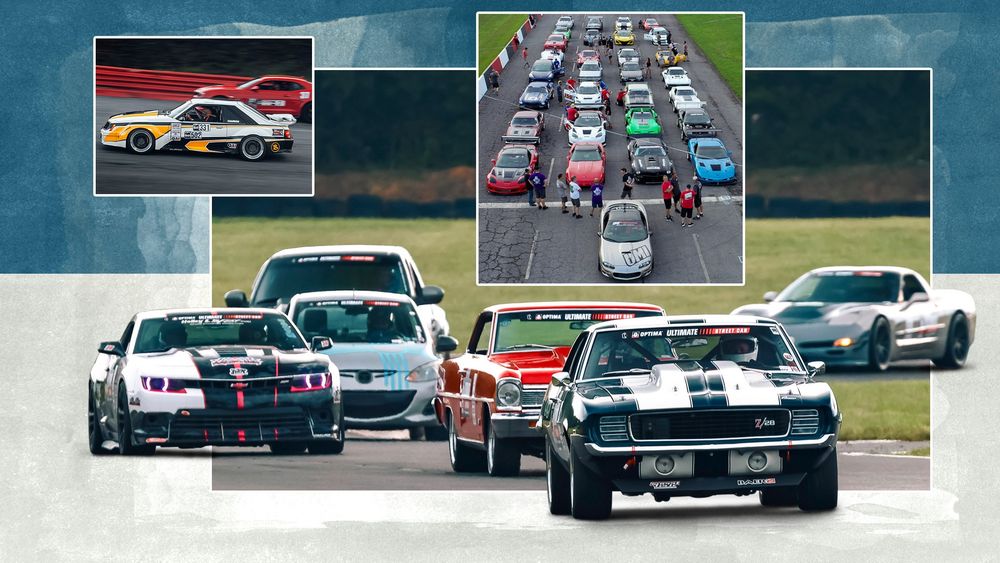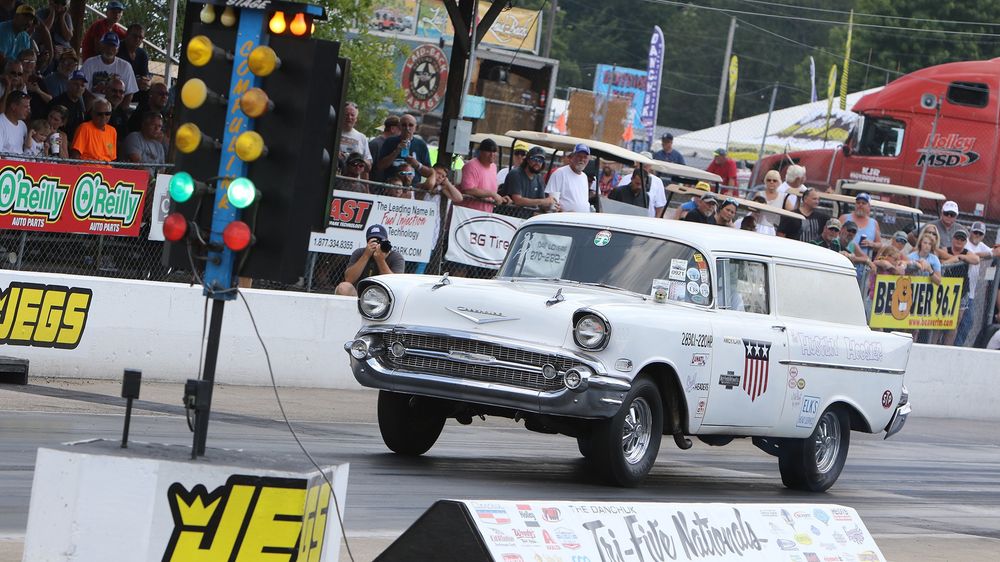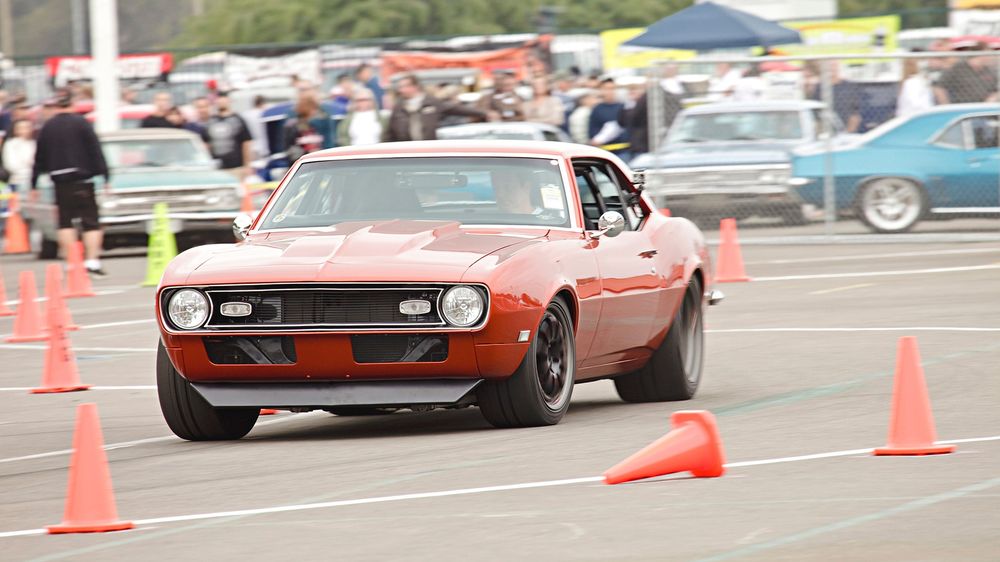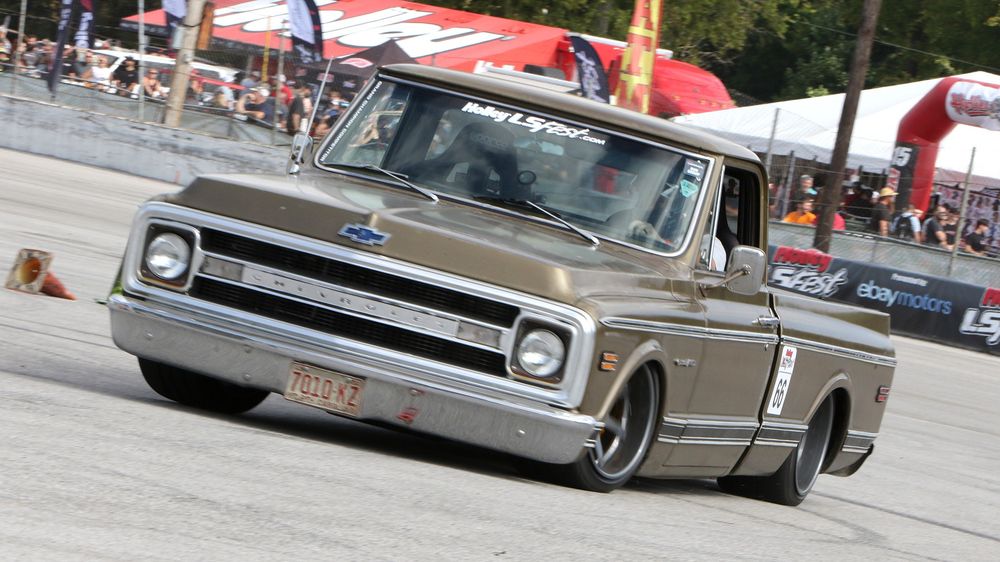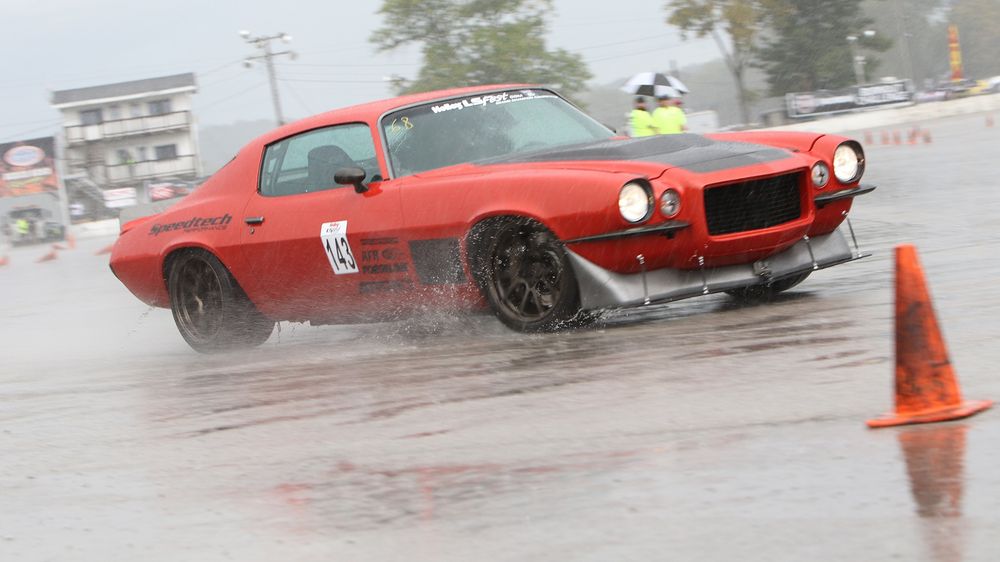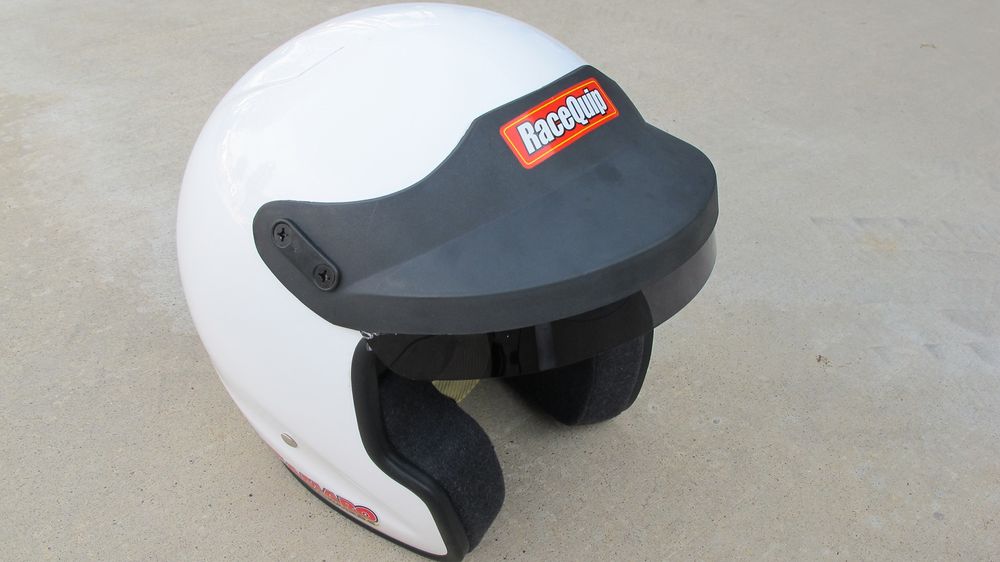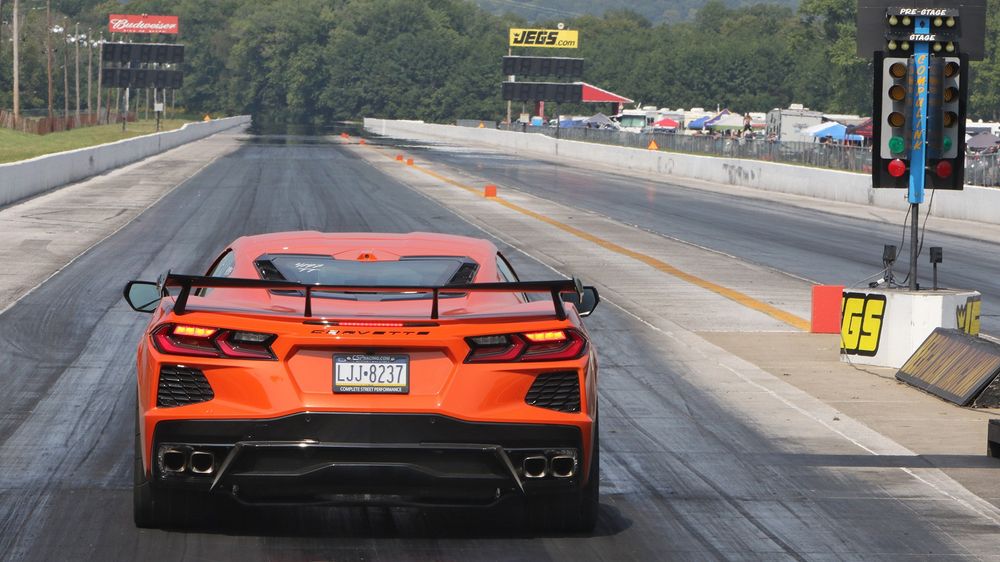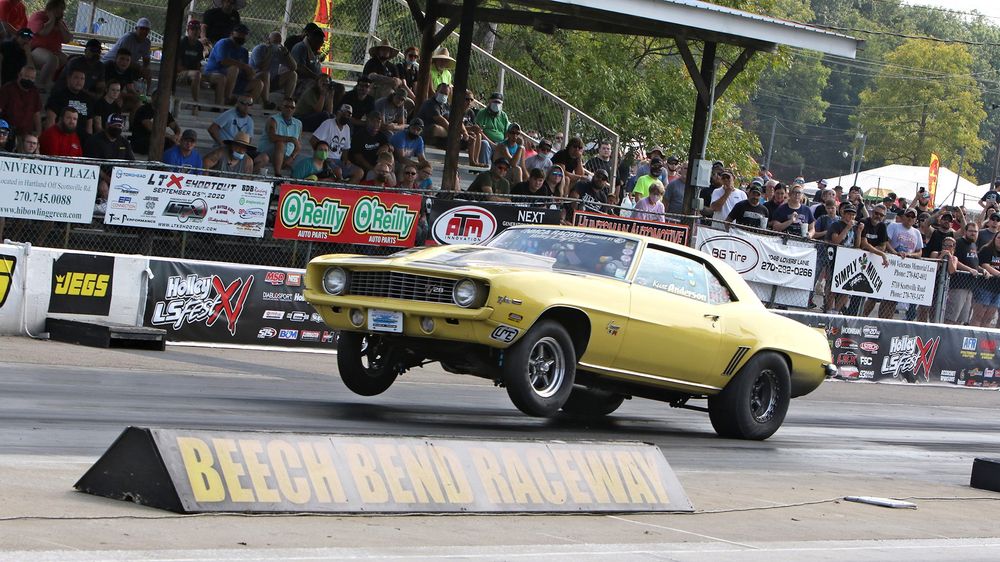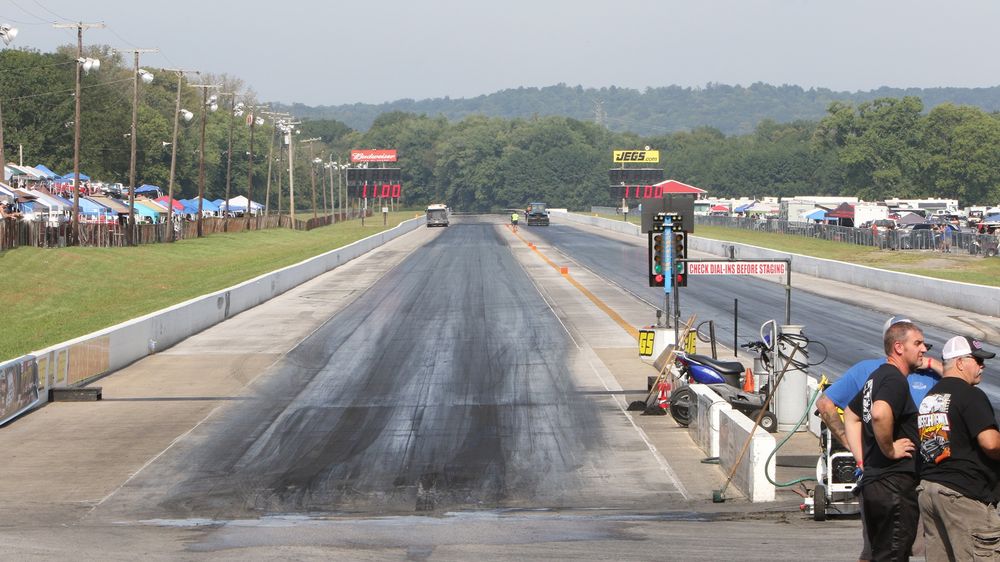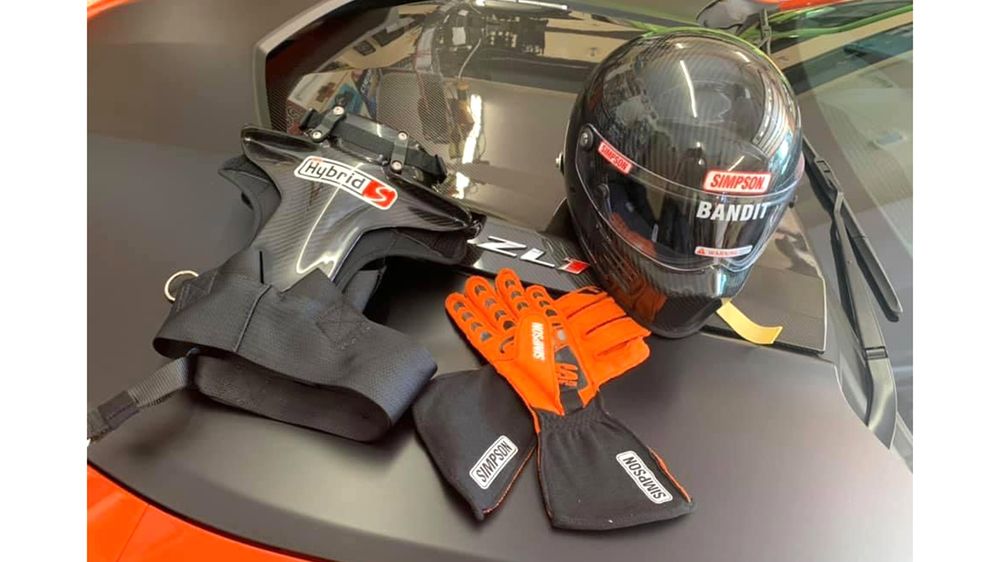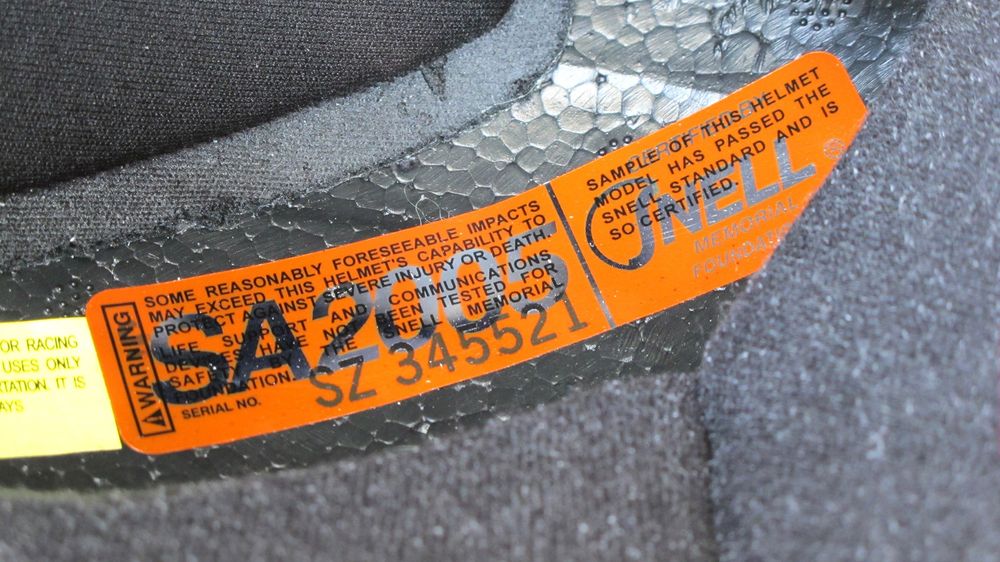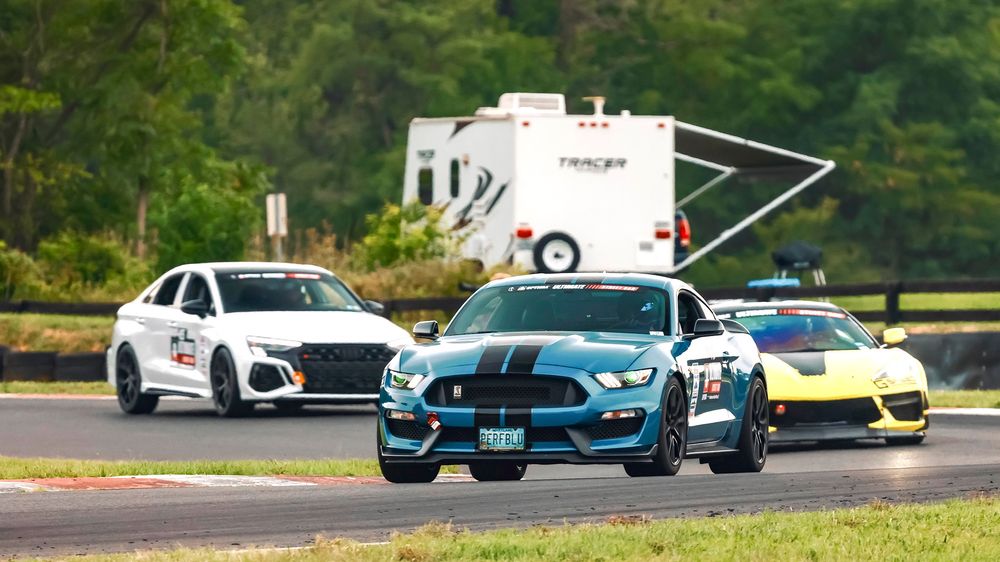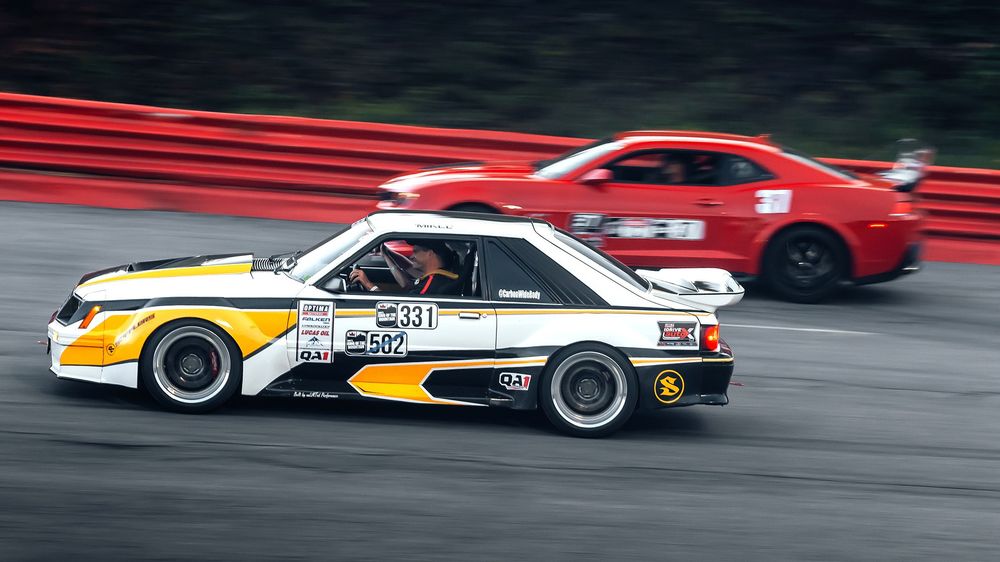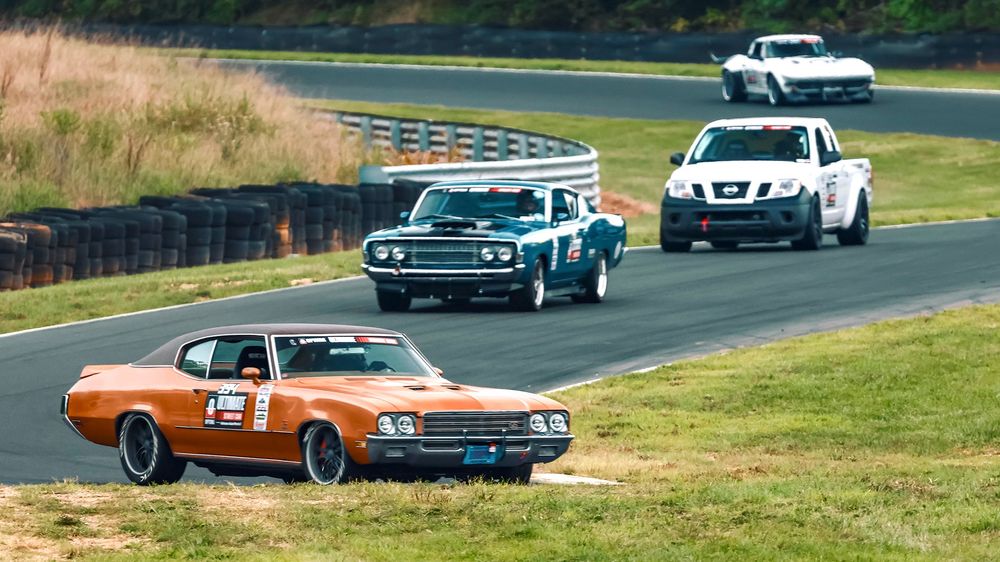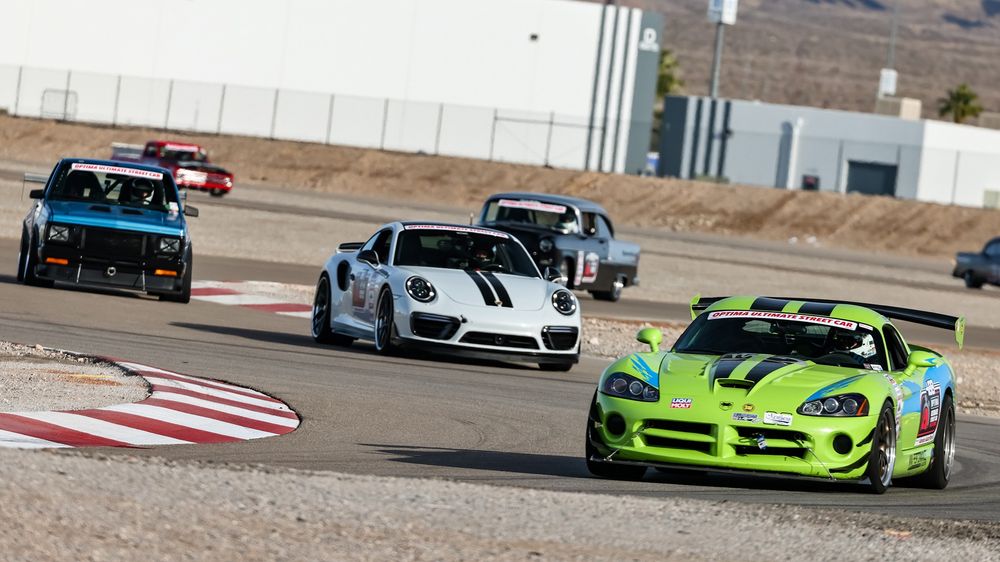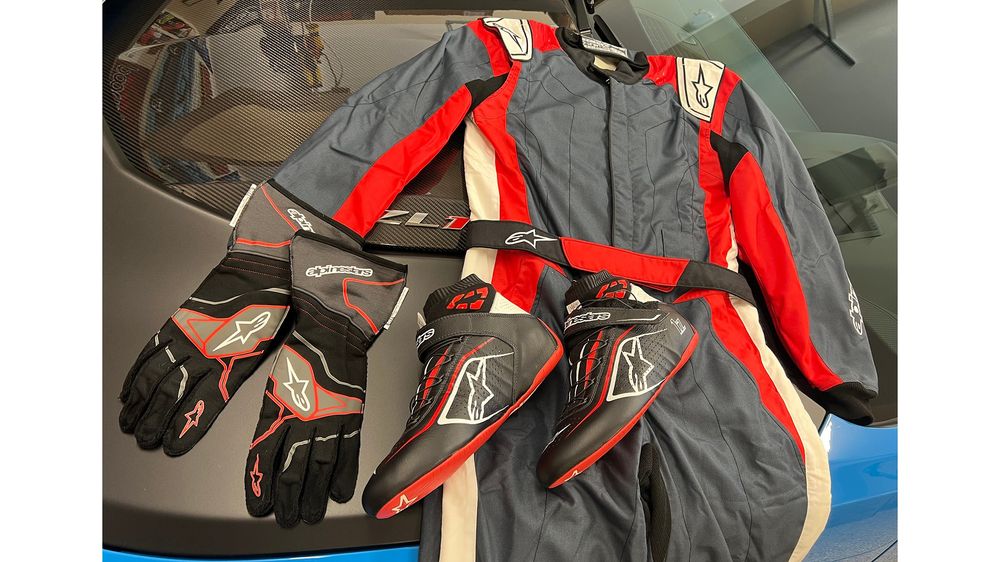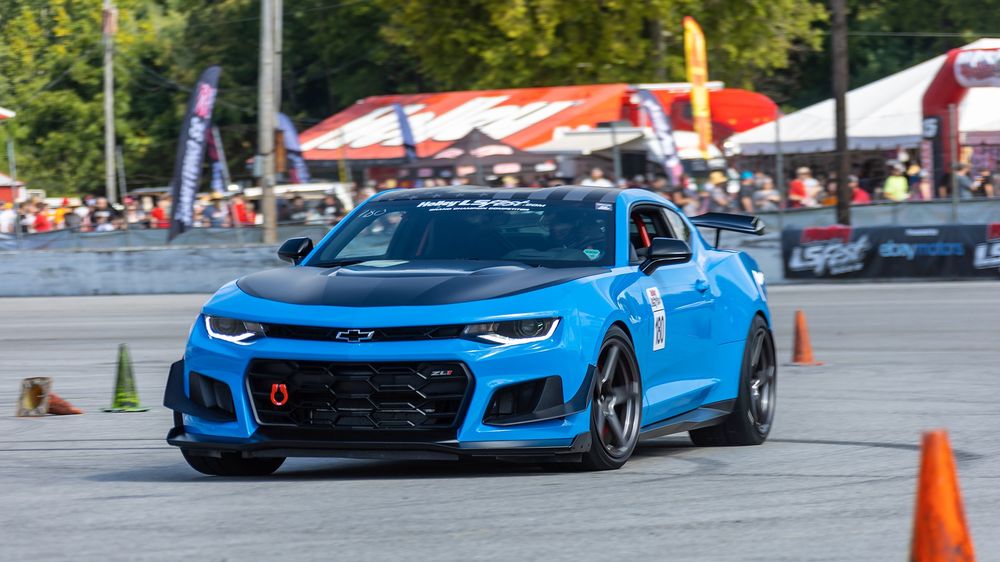Cheap Thrills! How to Go Racing Without Going Broke
Between autocrossing, drag racing, and open track days, you don’t need to spend a fortune to dip your toes into the motorsports pool.
Two words that should never really be strung together are “racing” and “budget.” Getting involved in motorsports and taking your car to the track cost cash, and the harder you hit the track and the more serious you get, the more cash you’ll burn through.
AI Quick Summary
HOT ROD's Steve Rupp looks at affordable ways to participate in motorsports through autocross, drag racing, and road course events. The article highlights the accessibility, low costs, and minimal gear requirements of autocross, and outlines entry-level options to start racing.
This summary was generated by AI using content from this MotorTrend article
Read Next
0:00 / 0:00
However, there are ways to have some fun with your hot rod, hit the track, and spend a sensible amount of money on the process. We’re going to skip over the “racing on a budget” ideas such as karting or E-sports and look at ways you can enjoy your car or truck on the track without winding up in debtor’s prison.
For most of us, the racing will happen in one of three segments: autocrossing, drag racing, and road course events. These three make up most of the amateur racing out there, and they are common enough that it’s not difficult to find local events going on.
Autocrossing
Autocross events can be found near every major population center in the U.S. and are a great way for beginners to hit the track without dropping a ton of coin, especially if you’re just looking to have fun and improve your driving skills. Autocrossing is also easy on your car, with tire wear being the biggest consumable.
Where autocross events have a big advantage is they can be hosted at almost any large expanse of asphalt, whereas drag racing and road course events require dedicated, harder-to-find (and sadly disappearing) tracks. Autocrossing’s ability to fit whatever patch of pavement is available helps make it one of the most affordable ways to hit the track and have some fun with your hot rod.
It also means that finding an autocross event is somewhat easier because it isn’t tied to a track venue. For example, in Southern California you have to drive 100 miles or more to a good road course, and if Pomona isn’t operating (and it rarely is), then it’s a long drive to Vegas or Famoso for drag racing now that Irwindale Dragway is closed.
Ramey Wormer works at UMI, which puts on some killer autocross events at their track in Clearfield, Pennsylvania. “The cool thing about autocross is you can use your street car,” Wormer says. “Minus a few high center-of-gravity SUVs and trucks, pretty much any car and even many trucks will do. Your local SCCA chapter will help you get into the right class, and you would be surprised how fast an experienced driver can run their street car through the cones. Your local autocross requires no mods to compete and have fun. As you progress, adding things like 200TW tires, more aggressive brake pads, and better springs, shocks, and sway bars will help your car get faster, but really, it’s seat time that will help improve your times the most.”
Finding an Autocross Event Near Me
To get started, see if there are organizations close to you that host events. The biggest player here is the Sports Car Club of America (SCCA) and its website is a treasure trove of local events, rules, and FAQ pages full of tips for new racers. We also suggest sites such as MotorsportReg.com, which hosts calendars of events you can search by ZIP code. Also, don’t be afraid to think out of the box. For example, nationwide car clubs such as the Porsche Club of America (PCA) or the BMW Car Club of America (BMW CCA) host events near many cites, and they do allow other cars to run in their events. We used to run our 1968 Camaro project in the PCA events, and it was a great experience. You can also brush up on your Google skills and find other organizers local to you. For example, here in California we have Racing Byrds, which hosts autocross events in Southern California and now Las Vegas. Also, keep in mind that unlike the other options, autocrossing is a rain-or-shine event.
Events Tied to Car Shows
We must give credit here to the Goodguys car show series. A long time ago, it started incorporating a small (sometimes very small) autocross course into its nationwide car show series. The autocross was free to those in the show, and for many, it was their introduction to autocross racing. Since then, many “car show” events have adopted this formula because it not only gives participants a fun, easy way to enjoy their cars but is also great for the spectators. The Goodguys series of autocrosses has grown over the years and is quite a serious deal these days, complete with points and a championship, but it’s still a great way for beginners to race for cheap.
Other events that have incorporated autocrossing, usually at no additional charge, would be the C10 Nationals events for you truck lovers, Shades of the Past in Tennessee, Cruisin the Coast, and our very own HOT ROD Power Tour. The Holley LS Fest East, West, and Texas events offer autocross and drag racing options, as well, for those who want to try racing without going broke.
The gist of all of this is that you need to dig around a bit to find an autocross event in your area, but given the nature of autocrossing, it’s one of the easiest events to find, and because of its affordability and accessibility for all types of cars and skill levels, it’s growing in popularity.
Autocross Costs
The cost to run an autocross event varies greatly based on many factors. Less expensive events will often have run groups where you’ll be required to help work on the course during your off sessions. This mostly involves righting cones that were knocked over by other drivers. Because the event doesn’t have to hire course workers, costs stay down, and we’ve seen entry fees for these events as low as $50.
For events that don’t require you to work the course, expect to pay between $100 and $175, which isn’t bad for a whole day of racing. Autocrossing has a low cost of gear required. Of course, your car will have to pass a basic technical inspection for safety reasons, and you’ll need a helmet. Some groups don’t care how old it is, while others say it needs to be Snell rated M (motorcycle helmet) or SA 2015 or newer. This means you could buy a used helmet that’s out of date for drag or road course racing but still great for autocrossing. Some events even have loaner and rental helmets available. Aside from the helmet and wearing down your tires, a bit of autocrossing is a very low drag in terms of costs involved—until you catch the bug and start getting serious about it, but that’s the same with any hobby.
Drag Racing
Since hot-rodding first started, the gateway drug to hitting the track has been drag racing. Back in the day, there were hundreds of dragstrips strewn across the country. Sadly, many of these have closed, but tracks are still around, and drag racing is a great way to legally drive your car hard without spending a ton of cash.
Finding a Drag Racing Event Near Me
Unlike autocross events, drag racing requires a dragstrip, so the best play here is to find tracks around where you live and hit their website for a list of dates they will be running. The two types of tracks/events you’ll find are quarter-mile and eighth-mile events. Many tracks host informal test-and-tune nights, where you show up and make passes. Sure, the car in the other lane might be running 10s, but you get to make passes and work on your launch, reaction time, and other skills without the added pressure of it being a competition. Not having to “win” means you don’t have to drop a bunch of cash on the parts, tires, and other things needed to grab a top spot. Test-and-tune sessions are often dirt cheap to run in, so that’s a plus.
A step up from test-and-tune events is organized bracket racing. Here it doesn’t matter how fast your car is because you are, in essence, racing against yourself and trying to match your dial-in time better than the person in the other lane. This is the least expensive form of competition in drag racing, and it’s a great way to get started in the motorsport on the cheap. It’s also perfect for a street car or daily driver that serves double duty.
You could also find an NHRA event. These are typically a bit more expensive but are held at nicer tracks, and they want new racers, so they often offer affordable racing options. At the HOT ROD Power Tour, we include drag racing as part of your entry fee, and other events, such as Holley’s LS Fest series, offer drag racing, as well.
Drag Racing costs
Test-and-tune events run cheap at around $20 to $50, and some events even offer discounts for high school students and others they’re trying to lure to the track for safer fun. A track near us offers two passes for $20, and $40 will get you unlimited street-legal passes. In other words, entry-level drag racing is dirt cheap to do. With faster cars, the costs to run will start to go up, and more safety gear will be required, which adds to the cost, as well. For a real NHRA event, you can expect to pay between $150 and $200, plus you need to pay for each crew member you bring along (not that you really need a crew if you’re just starting out).
Compared to autocross racing, the gear required for drag racing is a bit more involved and is all based on the speed of your car. The faster the car, the more safety gear and car modifications required. If your car or truck is running 14s, you’ll need a properly SFI-rated helmet, long pants, closed-toe shoes, and sometimes a long-sleeve shirt. These are the bare minimums, but there’s nothing wrong with running more safety gear. As you go faster, you’ll need a fire-resistant jacket, then a full racing suit, HANS neck restraint device, safety harness, roll cage, and the list goes on. But for people starting out in the typical street car, we would recommend a good helmet (because your head is important), fire-resistant gloves (just in case), and a fire extinguisher safely mounted in the car.
Also, keep in mind the specs for safety gear in drag racing are constantly evolving, so you need to make sure you are buying the right gear. Check what’s required before you buy, and make sure the standard won't be changing soon. That helmet that’s on sale isn’t going to save you money if the SFI/Snell rating it carries ages out in a few months. In the long run, you’ll actually save money if you buy the latest SFI/Snell-rated gear. Oh, and please don’t buy the least expensive helmet you can find; take a bag lunch to work for a month, look for change in your sofa, and buy a quality helmet from a leading maker. Reading through the newest NHRA rulebook will give you a good idea of what’s required based on the speed you expect your hot rod to run.
Road Course Racing
Road course racing, also known as open track days or high-performance driving events (HPDE) is great fun. Road course stuff is more expensive than autocross and drag racing, because road course racing requires road course tracks that take up vast areas of land and are extremely expensive to build, maintain, and operate. But it can still be done on a reasonable budget. When you sign up for an open track day, you’ll generally be assigned to run groups based on your car and skill level. This type of racing often has multiple cars on track at the same time, and rules for passing and other safety procedures specific to that particular track are explained at the driver’s meeting. Most organizations have a group for new drivers, and often they offer, for free or for a small fee, instructors that can ride with you and show you the ropes in regards to the best line to take around the track, the rules, what the various flags mean, and how to safely pass and be passed on the track. All of these track groups want new drivers so they can grow, so it’s in their own best interest to be accessible to new drivers.
Finding a Road Course Track Day Near Me
Like drag racing, road course racing requires a track, so that’s usually the best place to start looking. Often the tracks in your areas will have a calendar of events, and from there you can find the groups putting on events. Like with autocrossing, MotorsportReg.com is a good resource for finding HPDE events in your area. You’ll also find that in most populated areas, multiple groups host events at your local track. Typically, these groups focus on a few tracks in a given area or even one specific track where they host events. Sports Car Club of America is also heavily into events at road courses, and it offers a ton of options for new drivers on a budget. We really like its Track Night in America series, where for about $180 (if you’re an SCCA member—and you should be) you can run some of the best tracks around the country.
Optima also puts on a nationwide series of events that combines road course with autocross and other driving events into a multiday event friendly and welcoming to newcomers. They also drive on some of the best tracks in the country, including Daytona, Road America, and VIR. The entry is around $650, but that’s three days of driving events with all the fixins.
Road Course Racing and HPDE Costs
As we said, HPDEs are more expensive, but they can be affordable if you’re just looking to have fun and improve your car and driving skills. At the SCCA track events, you typically only need a valid driver’s license, a properly rated helmet, and a car that passes the safety inspection. These events cost under $200, but you also need to factor in fuel, snacks, a hotel if it’s far from home or a multiple-day event, and wear on your tires. Companies like Hagerty also offer short-term track day insurance plans if you’re worried about tracking your daily driver.
Out here in the west, we have Speed Ventures, which has been hosting track days since 2001. A two-day driving event costs around $240, and we think $120 a day to drive on some very nice tracks is a bargain. Speed Ventures can even rent you a helmet, and there are instructors available (both group and private) for the beginner groups. Chances are your area has an organization like this, so hit the internet and ask around.
HPDE events have you moving at speeds far greater than on the typical autocross track, so having a high-quality helmet with the newest Snell rating is imperative. Some groups require safety items such as a securely mounted fire extinguisher, tow hooks, HANS devices, and fire-resistant clothing. Even if these items are not required, they’re still worth considering even if you’re new to driving on a road course (or maybe especially if you are new to road course driving). When you are new, you will just run what ya brung, but as you get better, you’ll want to invest in better tires and maybe a set of brake pads for the track that you can swap out before you run. Although upgrades will make your car faster, the best investment you can make is seat time. “Road racing is a different animal entirely,” UMI’s Wormer says. “It’s best to start out with some type of sporty car since the family sedan will only be fun for a few minutes until it’s spent. Track events like pay and drive HPDE and SCCA Track Night in America are great ways to try the sport without investing huge money in a car. These types of events usually have a novice class and often provide an instructor to show you the line, apexes, braking points, and so forth. As you get faster, you'll want a tire upgrade, brake pad upgrade, and probably springs, shocks, and sway bars. Road racing is pretty hard on equipment as compared to autocross, but of course, some cars are more capable than others.” An old C5 Corvette is relatively cheap and great fun around a track, but you certainly don’t need anything fancy to have fun at track day.
So What Are You Waiting For?
For the hardest part—getting started—we asked Jimi Day, owner of FM3 and organizer of the Optima series of driving events his thoughts: “First piece of advice: Don’t talk yourself out of it. High-performance driving is one of the most gratifying experiences you can have, from the thrill of the car to boosting your confidence level to meeting your new best friends. Second, get some good safety gear; you’re worth it. Most HPDEs and autocrosses are going to require some basic safety gear like a helmet and neck restraint. For less than $500, you get some very good equipment that will get you through tech. Next, find a local event and read their rules. You’d be amazed at how many people show up and have no idea of the rules. Understanding the rules of a particular organization will make your first experience (and theirs) so much easier and smoother.
“When you get to the event,” he continued, “do more listening than talking. Ask as many questions as you need to get comfortable and get a vibe of the staff and other drivers, but listen to and take the advice of others. Be friendly, and follow all the instructions you’re given. If someone offers a ride-along and you feel safe doing so, take it, every time. You can learn a lot from a more experienced driver, and that will get you up to speed a little quicker.
“When it’s your turn, don’t overthink it. You should be a bit nervous. Don’t panic. Every driver at the event went on track for the first time somewhere. Remember the tips from your drivers meeting, and if you’re on a road course, remember to check your mirrors. Drive at a pace that’s comfortable for you, but remember, there may be other people on track besides you. I always tell people, ‘Act like you belong here.’ There are several groups that you can seek out for a first-time experience that won’t break the bank. Many festival events and car shows offer a combination of performance driving, like Holley’s LS Fest, MoParty, or Ford Fest. Autocrossing, speed stop, and drag racing segments take place throughout the weekend and give you a great opportunity to experience a lot of capabilities of your car. If you just want to do a single element like autocross, there are multiple autocross series and events that range in price from $50–$150. The best bang for your buck is Summit Racing’s DriveAutoX series. For $150, you get to autocross all weekend, on up to four different courses, and you don’t have to chase cones. If road course action is what you seek, there are many HPDE operators that take up residence at any of the road course tracks nationwide. Prices vary from $200 to $2,000, depending on the experience they are offering. Want to learn to HPDE in a competitive environment? Optima's Ultimate Street Car series is a great value—$650 gets you a three-day weekend at a bucket-list track that includes autocross, speed stop, and road course laps with 75 other gearheads just waiting to be your friends. You bought the car, now drive it.”
Born and raised in Southern California I started as the technical editor for Popular Hot Rodding (PHR) magazine where I learned the business before moving over to work with Nick Licata, at Camaro Performers, as his tech editor. At PHR I built a 1968 Camaro called Bad Penny that was one of the earlier pro-touring cars that actually ran the track hard. We won the first Optima Ultimate Street Car Invitational in 2008 and placed well several other years. At Camaro Performers we started several project cars and did a ton of tech. Eventually I was made editor of Vette magazine for a short time before being slotted to run Super Chevy magazine. Running the brands was fun, but I've always enjoyed being a technical writer more. So after more than 15 years I'm back to writing tech content, this time for the HOT ROD network. I enjoy being with my family, shooting, and working on my latest car, a 1969 Camaro called Tri Tip.
Read More
